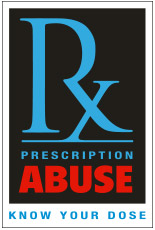Opiates: The Silent Epidemic
(Submitted in January, 2014)
Currently there is an epidemic sweeping this country at an unprecedented rate. The epidemic is prescription opiates. Approximately 50 people die every day from prescription opiates. Put another way, if compared to all wars fought by the United States, the death toll from prescription opiates would be the third deadliest campaign in US history. The only wars with more casualties would be the Civil War and World War II. If this trend continues, in about 10 years the number of casualties will exceed World II at more than a half million dead.
So how did we get here? Starting around the late 90’s and into the 21st century, pain as the 5th vital sign was starting to be monitored by health care professionals. Patients who were in chronic pain were asked to rate their pain on a scale of 1-10. Pain greater than a four on this scale was deemed undesirable and would require treatment. Patients were then started on medications to alleviate pain, and opiates were the first and most common choice by many providers. Since then, physicians, dentists, nurse practitioners and physician assistants now prescribe 4-5 times the amount of opiates they did 10 years ago. Currently, there are enough opiates prescribed that every US citizen over the age of 18 could take 5mg of Lortab every four hours for the next month. We could all go on national holiday.
Over the past decade of my practice, I have witnessed the effects of monitoring pain as the 5th vital sign. I have seen children who are now being raised by their grandparents because both mom and dad overdosed on prescription Methadone. Newborns being admitted to Neonatal Intensive Care Units to withdraw from opiates for the next 4-6 weeks because mom was dependent on Lortab. Grandparents who will never see their grandchildren open Christmas presents because they themselves were on too high a dose of Fentanyl patches to wake up. Teenagers who will never graduate from high school, because they took some of mom’s perks and died in a head on collision.
For a little over a year-and-a-half, I have been actively working with our organization’s Malpractice Insurance Carrier, promoting a plan called Community Safe Prescriber. I have had the privilege to speak to some of the other organizations who share the same Malpractice Carrier in the Rocky Mountain Region. I usually begin my presentation by asking three simple questions of the providers present. Number one, how many of you have cured patients of their chronic pain with the use of prescription opiates? Number two, how many of you enjoy treating chronic pain with opiates? Number three, how many of you know somebody or someone that has died from an opiate overdose? The answers are always the same, whether I am in Nebraska, Wyoming or somewhere in Montana. Not surprisingly, I have yet to have anyone raise their hand to the first two questions. Sadly, I have yet to have anyone keep their hand down to the last question.
As a physician, I find this troublesome. I took an oath to do no harm. If I took an oath to do no harm, why should anyone die from prescription opiates? Is the collateral damage of treating chronic non-cancer pain worth the price? Especially when there is mounting evidence that patients on chronic opiates usually have a poorer quality of life and life expectancy, when compared to those treated by other means. I don’t believe that prescribing opiates was the original intention of monitoring pain as the 5th vital sign. I believe the original intention was to monitor and search out the cause of the pain and treat accordingly. Contrary to popular belief, opiates are not a cure for chronic non-cancer pain. In fact, opiates may make pain worse in some cases. To date, there is no cure for chronic non-cancer pain.
Where do we go from here? Chronic non-cancer pain is very real and patients will do whatever they can to rid themselves of this ever present demon. However, adding the lifelong sentence of opiates may be another demon they were not expecting. In my opinion, to treat patients appropriately, and to stem the current epidemic, it will take a change of current prescribing patterns and patient and provider responsibilities. Providers need to monitor patients on a routine basis with follow up visits and periodic urine monitoring to ensure patients are kept safe. Patients will need to keep their medications secure so that it can’t get into the wrong hands. The health care community at large will need to be involved in educating their citizens about the dangers of opiates. However, before any of the above can occur, we must first acknowledge this silent epidemic exists and give it a voice.
— Mark Mentel, D.O., Community Medical Center, Missoula
